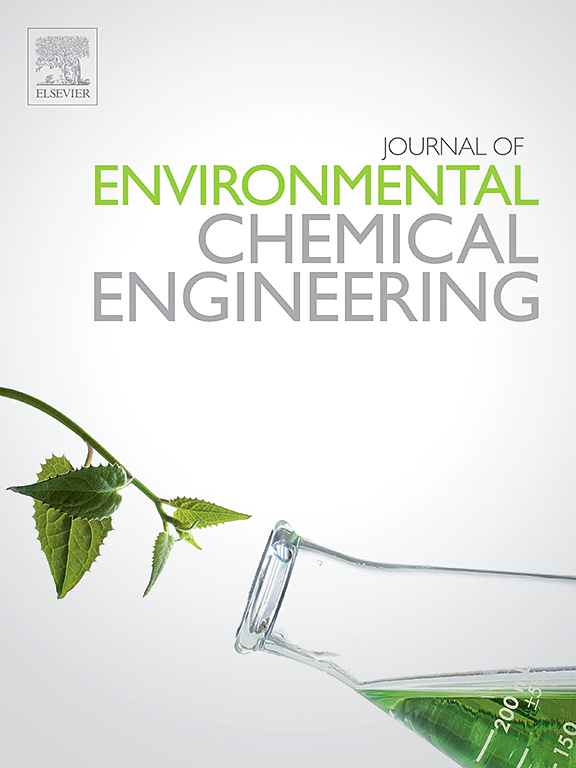Recent advances of photocatalysts for nitrogen reduction reaction and mechanism behind them: How and why modifications change properties
IF 7.2
2区 工程技术
Q1 ENGINEERING, CHEMICAL
引用次数: 0
Abstract
With the increasing demand for green production, the employment of pollution-free light in catalyzing ammonia production is receiving increasing attention. In order to achieve higher nitrogen fixation efficiency, many modification strategies including doping, anchoring, functionalization, defect engineering and heterostructure construction have been applied to enlarge the absorption range, facilitate the charge separation. However, in this process, the available type of atoms for doping and coupled substances for heterojunctions are almost obtained through a trial-and-error approach, consuming lots of time and resources. Fortunately, the above-mentioned issue can be significantly alleviated with the assistance of a clear mechanism, which can also provide guidance to select suitable modification measure for various systems, thereby promoting the emergence of more efficient photocatalysts. To this end, we classify and discuss the newly developed nitrogen fixation photocatalysts in recent years, and summarize the mechanism of improving nitrogen fixation efficiency by analyzing the changes in inherent electronic properties at the atomic level. First, we list the basic requirements and the corresponding difficulties of the photocatalytic nitrogen reduction. Second, several strategies, classified based on morphology and working mechanism, are investigated. Finally, the opportunities and future prospects are proposed on the basis of the conclusions we obtained.
氮还原反应光催化剂的研究进展及其机理:修饰如何及为何改变性质
随着绿色生产要求的不断提高,利用无公害光催化合成氨生产越来越受到人们的重视。为了获得更高的固氮效率,人们采用掺杂、锚定、官能化、缺陷工程和异质结构构建等多种改性策略来扩大吸收范围,促进电荷分离。然而,在此过程中,用于掺杂的可用原子类型和用于异质结的耦合物质几乎都是通过试错法获得的,耗费了大量的时间和资源。幸运的是,在明确机理的帮助下,上述问题可以得到显著缓解,也可以为各种体系选择合适的改性措施提供指导,从而促进更高效光催化剂的出现。为此,我们对近年来新开发的固氮光催化剂进行了分类和讨论,并从原子水平上分析其固有电子性质的变化,总结了提高固氮效率的机理。首先,我们列出了光催化氮还原的基本要求和相应的难点。其次,研究了基于形态和作用机理的几种策略。最后,在得出结论的基础上提出了机遇和未来展望。
本文章由计算机程序翻译,如有差异,请以英文原文为准。
求助全文
约1分钟内获得全文
求助全文
来源期刊

Journal of Environmental Chemical Engineering
Environmental Science-Pollution
CiteScore
11.40
自引率
6.50%
发文量
2017
审稿时长
27 days
期刊介绍:
The Journal of Environmental Chemical Engineering (JECE) serves as a platform for the dissemination of original and innovative research focusing on the advancement of environmentally-friendly, sustainable technologies. JECE emphasizes the transition towards a carbon-neutral circular economy and a self-sufficient bio-based economy. Topics covered include soil, water, wastewater, and air decontamination; pollution monitoring, prevention, and control; advanced analytics, sensors, impact and risk assessment methodologies in environmental chemical engineering; resource recovery (water, nutrients, materials, energy); industrial ecology; valorization of waste streams; waste management (including e-waste); climate-water-energy-food nexus; novel materials for environmental, chemical, and energy applications; sustainability and environmental safety; water digitalization, water data science, and machine learning; process integration and intensification; recent developments in green chemistry for synthesis, catalysis, and energy; and original research on contaminants of emerging concern, persistent chemicals, and priority substances, including microplastics, nanoplastics, nanomaterials, micropollutants, antimicrobial resistance genes, and emerging pathogens (viruses, bacteria, parasites) of environmental significance.
 求助内容:
求助内容: 应助结果提醒方式:
应助结果提醒方式:


